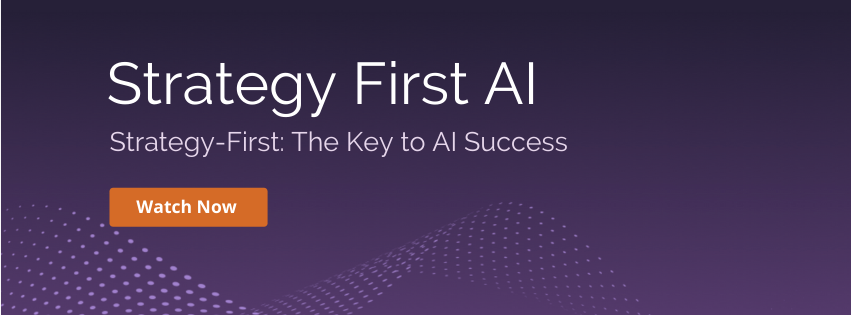 An MIT-BCG study found that a mere 10% of organizations achieve financial benefits with AI. This is because businesses often unwittingly deploy a set of tactics with their AI that’s in conflict with their overall strategic objectives. That can result in AI that actually destroys value. And maybe even put you out of business.
An MIT-BCG study found that a mere 10% of organizations achieve financial benefits with AI. This is because businesses often unwittingly deploy a set of tactics with their AI that’s in conflict with their overall strategic objectives. That can result in AI that actually destroys value. And maybe even put you out of business.
I saw this first-hand when my co-founder Jonathan and I were working on a project with his previous company. Jonathan used BeyondCore, my previous product, to analyze sales for an industrial products business. Jonathan’s company had introduced a lead scoring system based on a traditional rules-based model. The system performed well initially, making it easier to identify high quality deals. But over a period of three years, the revenue from new deals declined steadily and nobody could identify why.
BeyondCore revealed something very strange about his data. When decision makers were directly involved in the process, BeyondCore found it increased the likelihood that a deal would go through. It was also a good thing when opportunities were for new design wins – cases in which a component is designed to go into a new product, which leads to ongoing sales. But for some reason, the combination of a decision maker being directly involved and a new design win was a bad thing.
That made no sense. Why would that combination be bad if each factor on its own was favorable? Something was clearly wrong.
When Jonathan investigated further, he found that in cases involving large companies, a decision maker was almost never involved in a new design win project. But when a startup initiated a new design win project, a decision maker was always involved in the process.
Because the legacy model he had been using had determined that individually a new design win and decision maker involvement were favorable factors, all startup new design-win deals scored very high. That moved the company from having about 5% of its opportunities focused on startups to almost 25% involving startups a few years later. The AI had massively shifted the business strategy towards startups, and over time, that resulted in lower revenue because many of the startup opportunities failed due to the startup itself failing.
The model had reset the strategy of the organization without the company leadership realizing it. And this had been going on for years.
I’ve spent a lot of time thinking about this and I’ve come to the conclusion that this is the fundamental reason why companies today are not getting value from AI models. As it’s used today, AI is tactical in nature. It answers questions like “Should I pursue this opportunity or not?” or “Should I retain this customer or not?” Those are tactical questions, not strategic ones.
But many such tactical decisions in the aggregate become the strategy of the organization. Jonathan’s model was scoring startup deals higher so his business shifted towards startup opportunities even though that was not the strategic intent. Many organizations don’t realize that when their AI makes tactical decisions, it can change the strategic direction of the company.
Remember that AI – especially when it is integrated directly in your CRM, ERP or other enterprise systems – is instantly at scale. Your employees are being advised by the AI right at the moment of taking a decision. The gravitational pull of that is far stronger than what was in the strategy Powerpoint you sent out at the beginning of the year. The tactics of an AI can directly contradict the strategy that your organization is trying to pursue.
That conflict – between the organization thinking that they have a clear sense of their organizational strategy, and the very different strategy that arises from many tactical decisions driven by an AI – is the reason why only 10% of organizations get value from their AI. In fact, the 10% that do get value probably just got lucky, because 10% of the time, the optimal tactic turns out to be a good enough strategy. But hoping you get lucky with your AI is like playing Russian Roulette with nine loaded chambers and only one empty one. The odds are stacked against you and the cost of failure is very high.
Another big problem with traditional AI is its inability to respond to change quickly.
Most AI is very inflexible. Changing an AI – updating it with data from new situations – is very difficult. When Covid hit, that created huge problems for organizations using traditional AI. Since circumstances changed so dramatically, organizations had to go through a three month or longer process to update their AI. That put many companies even deeper in the hole.
That’s why Aible has taken a different approach. Aible creates a portfolio of many AI models. Some will be optimal when the market is growing, others will be optimal if the market is contracting, still others will be right if your deal size has increased or decreased. There are many AIs that are the right choice for different circumstances, so you can always quickly move to the appropriate AI when your business conditions change.
Aible starts from the strategic intent of your company and creates a set of AIs that delivers the right tactical decisions that would help achieve that strategic intent, and then monitors and responds as market realities change. That way, the AI is always optimized for your strategic intent, adjusts to change quickly, and continuously delivers value.
Aible’s strategy-first approach is the reason why Aible can guarantee impact from AI in one month. Aible assumes the risk that every other AI provider makes their customers take on. No other AI company can say the same.


